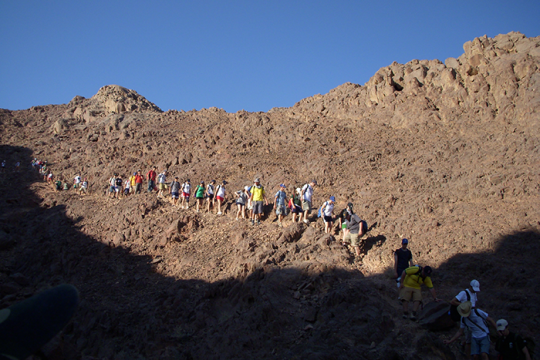The Art of God's Creation

A glance at the world around us reveals what most would probably consider an undeniable fact: the known universe is comprised of a myriad of organized structures, patterns and arranged matter from the smallest particle to the largest expanse. Placed directly in this field is the lonely human being, searching for meaning, searching for order, and frequently, for God.
As if at once, our meditations invite this strange order to appear to us, as lens focusing, searching for an image, for the image. We wonder, "Why is this so? Who has fashioned this strange entity, the universe, and for what purpose?" We debate, we surmise, we jump to conclusions and then back from them. We categorize ourselves into the faithful and those of less or no religious belief. We fight to defend our conclusions as we follow the path of ancestral religions or advocate for a secular world. Yet, despite all of these crossing paths of confluent and contradictory intentions, a second undeniable fact can be observed: we create. Whether our creation is new, or a rebuilding of the old, we create.
In a defined world-view that we call Judaism, God is the Creator and we the created. Everything flows from an omnipotent point at the source, the ' b'reishit' (in the beginning) span that brought existence from nothingness to something, that is, a universe worthy of complimentary praise. We employ many different systems to model this creation, from the fundamental texts that describe the original creation in Genesis to the complex systems of emanations in the s'firot (attributes or emanations of God) of Kabbalah. All of these systems, whether emphasizing repairing a broken creation (Lurianic Kabbalah), remembering creation and a people's narrative history (the Tanach) or describing how creation is a continual revelation of worldly and metaphysical realms (s'firot of the Kabbalah), provide models upon which we base creation for ourselves. The experience of reverse engineering that we apprehend in textual and religious study is not accidental; it serves as a blueprint for our own creative impulse.
Creation by humanity as a whole takes many forms, from the deliberate arrangement of the words in this article to the unknown effects of mixing trillions of social media fragments into a new communication. Creation is physical, supporting our corporeal reality in the world such as a newly designed vehicle that gets us from A to B. It is informational, allowing us to explain the world to others. It is speculative, always pushing the boundaries of unrevealed knowledge. The act of creation can be pleasurable or painful, lifting us to the heights of self validation when successful, and causing despair when it misses its mark. Yet we cannot desist from creating. It is in our very nature.
Resting on the very thin veneer of the world's many creations are the creations that we call Art. An even smaller area in this vast field is that of creations which we call Judaic Art. The Judaic artist strives to reveal the essence of the world with a Jewish frame and to engage those affected by the art in a way that will move them to new Jewish revelations. Like the s'firot that act on one another in circuitous ways to enable elevation of the spirit in a complex world structure, the artist absorbs the world, contemplates, and the re-creates it in a new and unique form. This form is apprehended by others, and, if compelling, will 'ring true' leading to deeper devotion, deeper understanding and even divine revelation. The artist creates as God created, from the intangible substance of the soul. 'Where did that idea come from,' they ask themselves. It came from being engaged in the Judaic world and channeling the otherwise inexpressible truths that were revealed at the moment of creation. The world of art washes over the viewer, listener or reader and transports them to a far off world-within-this-world. Their senses are stimulated through pattern, touch, sound, color, texture, phrase, movement, light and shade. In the presence of a Judaic work of art, the 'apprehender' is brought closer to their Judaism and to the God that is frequently sought.
This God, sought in the Judaic arts, is the God of creation and beyond. When a brush meets canvas, it is an imitation of the first universal moments. When a note is sung or played, it is the echo of a distant vibration in time. When a stone is sculpted, the sculpting pays homage to the fact that God, in the midst of the gargantuan and forceful structures of the physical universe, created a flowering garden that is in our care. Whether in color or gray, languages understood or yet to be understood, varied musical styles or expressive dance, the Jewish creative impulse points backwards and forwards simultaneously, from the first moment of God's creation to the fulfillment of our creative role in the unfolding of time.
There is one notable fundamental difference, among many, between human creative endeavors and those we attribute to God. God needed no patron. Whether in the act of tzimtzum, a Kabbalistic concept that God had to contract in order to make room for creation, or an active creation of six days, the Prime-Mover acted alone. Jewish artists, while enjoying autonomy in their art, must rely on the greater community to sustain them. It is through this patronage, this proxy, that an engineer of a physical civil bridge can contribute to the expression of the bridge of creation; how a lover of the words of Torah can bring the scroll into the midst of a congregation, robed in the most beautiful ornaments. Our heritage has been one of participation in the beautification of our Jewish world. As we glance more intently, scientifically, at the ordered universe revealed to our senses, so we must yearn to gaze at length through the windows created for us by those whose task it is to reveal the yet-to-be-created world, distilled in the medium of artistic creation, sweet and lovely as Sabbath wine.
Cantor Ted Labow is incoming Cantor-In-Residence at The Jewish Center of Northwest Jersey. He is an Executive Board member of the American Conference of Cantors, and when not serving as a congregational cantor, composes music, plays jazz piano and creates artwork for ketubbot (Jewish wedding contracts).



